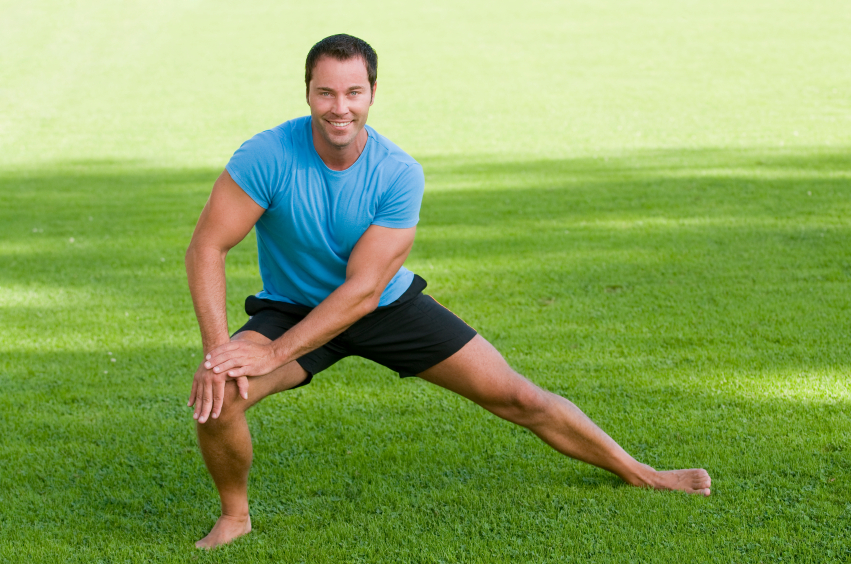
by Peter Winslow
Today I am pleased to offer you more must-know nuggets of highly powerful “insider information” for attaining remission and recovery from Ankylosing Spondylitis.
Before I do, I’ll remind you that the ASVA is completely different from other AS support groups, and we diverge from the Western Medical approach to chronic illness mainly because of our beliefs and practices.
The big difference between us and the others?
They are interested in providing drug treatments, radical diets, or basic coping skills you can use to “manage” your symptoms.
I am showing you how to make a full recovery from your symptoms and finally put an end to the never-ending gymnastics of “dis-ease management.”
What is my credential for this?
I was diagnosed with AS when I was 24. For ten long years I suffered with excruciating pain and stiffness, terrible mental and emotional anxiety, and despondent hopelessness. Yet I never stopped searching for relief in a world that seemed to offer no real answers.
After many years of seeking and experimenting, I found a mosaic of mind/body techniques that when used properly, began to dispatch my symptoms. I eventually used them to completely abolish the pain and stress of Ankylosing Spondylitis from my life.
I made a full recovery from all my symptoms including chronic, traumatic pain, daily spasms and stiffness, extreme sciatica, addiction to pain medications, clinical depression, anger and emotional issues, resentment, poor self-image and all the rest of it.
I am in complete remission now for over 25 years.
You may know that with great power comes great responsibility. I certainly do. I soon recognized a selfless duty to share the gifts I’d been given with others who would benefit from my example.
So I worked for years to design a road map for remission and recovery from AS, a process which has come to be called the Winslow Method™.
The methods in my system are not clinical subjects you can study at school; they are a precise series of beliefs, behaviors, tools and techniques that led me to full recovery, and I am living proof that they work. So are many of my clients.
No matter how severe your condition is, you can and will experience substantial improvement by using the Winslow Method™. Here are just some of the topics:
– 3 Beliefs that people in remission hold
– 3 Keys to recovery from Ankylosing Spondylitis
– 3 Ways to improve your health with no effort
– 5 Mindsets for recovery from dis-ease
– 8 Practices to accelerate the healing process
– How to stop your pain naturally
– How to put an end to your buried stress
– How to energize your body for faster results, and
– The exact steps I took for remission and recovery from AS
I bet you’re excited to begin a new and better life, so let’s dive right in. We’ll start with number one on the list, the 3 beliefs that people in remission from chronic illnesses all share:
First, we believe that a higher intelligence lives within us.
Whether we call it the subconscious mind, our divine nature, a higher self, or God doesn’t really matter; we just know there is a power operating within us that can heal the body.
This “higher intelligence” is what operates the millions upon millions of internal functions in the human anatomy. It keeps your heart beating and your food digesting even if you don’t know how it works. It heals your wounds and regulates your systems faultlessly on a daily basis. Like it or not, there is a subconscious intelligence smarter than the conscious mind at work within you, running the show.
The second thing people in remission believe is that what we think about affects our bodies.
We know that what we think and the intensity of our thoughts directly impacts our behaviors, the choices we make, and ultimately, the quality of our lives. To be healthy you must replace all negative, pessimistic, victimizing, destructive or hopeless thoughts and feelings with a bold and unwavering attitude of personal transformation.
The third belief we share is that we can help our bodies heal.
This one’s as easy as 1 -2 -3:
1. Decide that you are truly ready to go from pain and suffering to health and wellness
2. Believe that you can achieve it, and
3. Make a commitment to follow through on your decision.
It really is that simple. With the proper guidance you really can do it.
You have nothing to lose but the pain.
If you have questions or comments about this message, I’d love to hear from you. Even if you completely disagree with what I’ve done, give it to me straight and don’t hold back!
Peter

by Peter Winslow
Working with a client recently, I had the opportunity to share this incredible insight:
Nothing is ever a problem, until you say it is.
That means there can be no such thing as a problem, ever.
That is, there can be no such thing as a problem until you declare it so.
“Problem” is simply a label we put on a situation to deny acceptance of it. So, if your car transmission goes on the fritz, you might just decide that’s a problem.
The mechanic you take it to will probably see it differently. To the mechanic, it’s an opportunity. He’s likely to say, “Broken transmission? No problem.”
One person’s “problem” can be another person’s fortune—and acceptance of the situation is the determining factor for satisfaction and prosperity, or struggle and strife.
Even Albert Einstein once said that you cannot fix a problem with the same mind that created it. He meant that to produce a desired outcome, we’ve got to shift out of the “problem” mindset and into a positive state of being.
In his book The Power of Now, Eckhart Tolle writes that we create and even maintain our “problems” because they provide us with a sense of identity. This may well explain why some people hold on to old pain and suffering far beyond its ability to serve them.
Humans are, as far as we know, the only animals who persecute themselves by replaying their past mistakes over and over again in their minds. We continually punish ourselves by allowing feelings of shame and regret to shape our feelings and actions in the present moment. It goes something like: “This is who I am and who I intend to be until further notice.”
Others cling to frustration and worry about the future, as if this somehow gives them power; it really only makes them ill. Many hold stress in their minds and bodies, creating serious health issues, and eventually come to accept that state of disease as “normal” or genetic.
When my pain was at its most crippling, I thought AS was the worst thing that ever happened to me. It really did seem to be a towering and undeniable problem. Now I clearly see how it provided me with a hidden opportunity for shaming and blaming myself, and there was no resolution or recovery from there.
Yet when I shifted out of the “problem” mentality, my dis-ease opened a door to dynamic personal growth, which for me evolved into true and total healing.
A remarkable transformation can occur in almost anyone who honestly focuses on what they can gain from their challenges. It sounds simple, but this ancient advice says it all:
“If you let go a little, you will have a little peace. If you let go a lot, you will have a lot of peace.”
In every moment of your life there is a chance to let go of pain and suffering. In the coming weeks I will share with you how to release pain, frustration, anger and stress from your life. Here are a few basic points to get you started:
How to Let Go of Frustration
- Change your perception and determine that your “problems” are opportunities in disguise.
- Channel your discontents into immediate positive actions. Read that inspirational book on your shelf, listen to uplifting music or choose another activity that empowers you.
- Use meditation or yoga to bring you into the present moment instead of dwelling on the past or worrying about the future.
- Make a list of your accomplishments—including the small ones—and add to it daily. This causes you to let go of discontentment in order to make space for self-satisfaction.
- Visualize a box in your head labeled “Expectations.” Whenever you catch yourself dwelling on how things should or shouldn’t be, mentally shelve those thoughts in the box and leave them alone.
- Let go of wasting time and energy on what you do not control. Instead, express your feelings through a creative outlet like blogging or painting. This creates a visual reminder that you have actively chosen to release hurtful feelings.
- Engage in a physical activity at least once a day. Exercise decreases stress and increases endorphins and other chemicals that improve your state of mind.
Choose the items that make the most sense to you right now, and use them. You will soon discover that these small steps can make a huge and powerful impact in your life.
To your lasting success –
Peter

by Peter Winslow
Did you know that the body you lived in yesterday is different than the one you’re in today? In a process called cellular mitosis the cells in your body birth new cells repeatedly and die off naturally throughout your lifetime. In fact, in a few years you’ll have a completely rebuilt body altogether. Some cells reproduce faster than others; the cells that lined your stomach two hours ago have already been replaced with new ones whose daughter cells will soon be born. The body reinvents itself again and again throughout its lifetime and it’s plainly evident. Watch a youngster grow up and age over the years; what you’re witnessing is the process of cellular growth and regeneration occurring with the passing of time.
Neuroscientists tell us that brain cells, called neurons, are programmed a bit differently than the other cells. They adapt to their environment depending on what you learn and what new behaviors you acquire. In a process called neuroplasticity the map-like structure of the brain cells can be remodeled; doctors often see it when studying patients who’ve suffered head injuries and have since created new neuronal pathways to compensate for the loss.
In cases of head injuries that cause blindness, neuroscientists have observed amazing changes in the brains of the victims. Using functional MRI’s and brain imaging scans they have isolated electro-magnetic energy emitted by the visual cortex, a portion consisting of approximately one third of the brain, and found that this region has adapted and retrained itself in these patients to supervise new skills. Neuroplasticity is the process by which many blind people develop their highly acute senses of hearing, touch, taste and smell and are often able to master completely new tasks and creative endeavors that the rest of us find challenging and even impossible to do.
Until the mid 1990’s it was believed that brain cells do not regenerate beyond the formative years of development, after about two or three years of age. Scientists now know that was incorrect. Through a process called neurogenesis brand new neurons are created when you enrich your environment by taking up new and interesting mental exercises like studying a foreign language, and using significant mind/body exercises like learning to play a musical instrument or practicing meditation.
Tackling challenging skills like these helps to ward off Alzheimer’s and other forms of dementia because the process increases cognitive abilities and rebuilds memory function. This means that new and challenging mind/body activities enhance neuroplasticity in the brain. Here’s the catch: doctors say the initial changes are only temporary because you have to be emotionally engaged in the process to retain the results.
Permanent plasticity only happens when you feel passion, élan, savior faire and a zest for life because positive thoughts and a sense of wellbeing are critical for the release of the specific neurotransmitters and the other brain chemicals that enable the changes to stick. Your new skills must be taxing, interesting and highly motivating for the results to become permanent. This is another prime example of the conscious communication you send to your instinctive intelligence. It’s solid proof of the mind/body connection; in this case it needs you to consciously choose to feel passion and motivation before it can make the health benefits of your new activities lasting and permanent.
Neurologists have learned that neuroplasticity operates in two ways; it can be either positive or negative. An example of negative plasticity: many elderly people are understandably afraid of falling. Trying to avoid an accident by looking down at the ground in front of them while they walk narrows their field of vision which in turn trains the brain to decrease physical coordination and balance. The negative effects are due to the misunderstanding and misuse of the mind/body connection; fear is the motivation and it’s a strong emotion that powers the process. The resulting changes in the brain actually impair normal mobility and increase the likelihood of a fall, the one thing they were focused on, but trying to prevent.
Chronic pain is also an example of negative plasticity. It’s the result of the brain repeatedly firing specific neuronal pathways over time until what was once only temporary information has now become an ingrained bad habit. It’s like driving a truck on a muddy dirt road; the more you drive over them, the deeper the grooves become. The repeated pain sensations in your body construct an “information superhighway” on the roadmap of the brain but it is not necessarily a permanent fixture. You simply have to adopt the new habits, behaviors and activities that replace the old patterns and stick with them to permanently change the terrain.
As the mature cells within you constantly give birth to new ones, you’re actually building an entirely new and different body, a process that completes itself every few years. The work is alive and ongoing throughout your lifetime and you can take an active role in the process. Physical exercise is an excellent way to modify your physique and mental exercises are helpful as well. If you want to build a healthier body than the one you’ve got now, it really is possible to do so. Utilizing helpful mind/body techniques is one of the most effective ways to make a positive impact on your health and aging.
Peter

by Peter Winslow
Earlier this month I received an email from a young man diagnosed with Ankylosing Spondylitis who recently read my book Heal For Real. He said:
“Peter – Thanks for your guidance. I am progressing well, I’ve come off all medications and I feel better now than at any time in the last few years. As I finish resolving my emotional issues and fears, I plan to go back to college and get degreed so I can help others change their lives in the way you have inspired my changes.“
You might imagine I’d be pleased as punch at the news, and of course I am. Yet I realize it isn’t anything I did that led to his recovery; the credit is all his. He took the tools and information available to him, and he put them to good use.
My question to you is this: Are you making use of the resources available to help you help yourself feel better? And – if not, why not?
Maybe you don’t believe it can happen. If this is the case, then certainly you’re right. There is no teaching or psychology that says you can accomplish a thing if you do not believe you can.
Now, consider for a moment the biblical expression “Believe that you receive and it is added unto you.” This wise and well-known adage asks you to let go of limiting beliefs that hold you back and replace them with a bigger picture of who you really are.
Believe this: Your body is equipped with the power to heal itself. Within you is an instinctive inner intelligence that repairs, operates, supervises and builds your body from the ground up. It ever endeavors to keep you going in the direction of health and healing, even when your beliefs, behaviors or the environment you’re exposed to get in the way.
Your job is to recognize, understand and work with the inner intelligence that repairs your body, and let go of the negative thoughts and erroneous beliefs that work against you. You really can help yourself feel better by adopting the proper attitudes, behaviors and activities that lead to health and healing, and you can do that at any time.
What have you got to lose?
Peter

by Peter Winslow
In this day and age, it’s rather uncommon for people to think of the challenges they face or the maladies they suffer as having anything remotely meaningful to contribute to their lives.
In fact, we often consider these events to run counter to any meaningful purpose and indeed, many have resigned themselves to a belief that the conditions they struggle with have sucked all meaningful content right out of the very fabric of their existence.
Is it really so? Is there truly little or nothing of merit to be gained from the lessons that come from the trials and tribulations inherent in modern life, or from the quest for freedom from illness and suffering we so fervently seek?
In my own quest for freedom I came to learn that the first and most pressing need that took me in the direction of recovery from disease was this: Adjust the negative attitude, and end the personal hostilities.
Get over it, and get on with living your life.
Were it not for my disease, I’m certain I would not have learned this towering principle of self-healing and higher awareness in a timely manner.
In fact it was the emergence of Ankylosing Spondylitis that led me directly to the wisdom I needed to lay my personal struggles and emotional hardships aside. I mean, compared to AS, how bad could any of that stuff – the petty personal issues and emotional resentments – really be?
All the drama and self-image challenges I had meticulously focused on and actively fomented throughout my life soon paled in comparison to what became truly important – dealing with AS. I had found a larger goal, and a life mission: Discover a path to out-maneuver and outlive the autoimmune disorder, once and for all.
As I evolved beyond the need to find fault with myself and my condition, and moved beyond the bad habits of blaming and shaming those who had “victimized” me, an interesting development began to occur. The more I freed myself from the emotional stress and strain, the better I felt, and the more empowered I became.
With an emphasis on physical (and emotional) movement, including weight-bearing exercise, mental discipline and healing meditations, I began to steadily improve. I made the space for true change to manifest, and incrementally it happened. At long last I freed myself from the ravages of pain and suffering that had seemed so very insurmountable not so very long ago.
How did it come about? It all began with a simple adjustment in attitude, nothing more. This adjustment started a tiny snowball rolling down a hill, as they say, which inevitably agglutinated into a behemoth of power and force, bowling over the obstacles and nay-sayers in my way.
My hope is that you find it in yourself to reverse the resentment, anger, hopelessness, victimhood and other hurtful emotions you have borne for so long, and create the space for a true change of heart. This is the first step to lead you through the mist on your path of healing in body, mind and spirit.
Were it not for the adversities you’ve faced, you might never have found the way.
Peter





